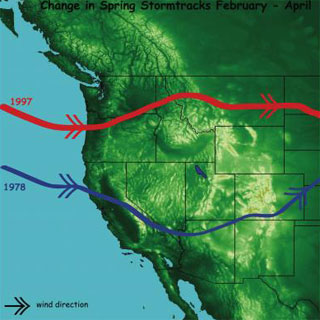
The answer to the above question, according to the World Meteorological Organization, is, well, summer.
Although July was brutal both to my anti-perspirant supply and my PECO bill, I think we can all agree that this August has been preternaturally pleasant -- and it hasn't even been calculated yet.
As
this Reuters story highlights, the first half of 2008 was the coolest of the last five years.
We true believers of Global Warming are often, with some cause, labeled as alarmists. (Folks, we're just trying to get your attention.)
So it seems only fair to purvey the good news as well.
So yes, thanks to La Nina, which cyclically follows the warming trend known as El Nino, the first half of the year has been cooler than the previous five and is likely to stay that way until January.
The bad news, and you knew there had to be some, is that it will still be warmer than average. That's because the last five years are among the hottest in recorded history.
And guess what? Yep, more bad news.
In addition to this being a cool trough in an otherwise hot upswell, more extreme weather is accompanying it.
For the southwest, where impractical increases in population are being matched by equally alarming decreases in available water, that means less rain.
First, in the lower atmosphere, greenhouse gases are heating things up. Next, high up, holes in the ozone layer are cooling things off.
As any meteorologist worth his salt-spray can tell you, temperature and pressure differentials are what weather is all about.
The result of this particular dynamic is it pushes the jet streams toward the poles in both the northern and southern hemispheres.
Those jet streams are what carry Pacific Ocean moisture to the southwest deserts. Now, that rain is being pushed further north.
The cool chart that the magazine used to explain this is posted at the top of this blog.
"If we keep doing this, the climate response becomes more extreme," says atmospheric scientist Stephanie McAfee of the University of Arizona in Tucson, who led the research identifying the loss of rain.
Now that's the kind of downer that any gloom-and-doom Global Warming enthusiast would feel proud to end a blog entry with.
Labels: El Nino, global warming, La Nina, Reuters, Scientific American, Southwest, University of Arizona, World Meteorlogical Organization

